In This Issue
- Cloud Spending Is Up
- Edge Computing Mkt
- Cook & Bezos to WH
- Report from the CEO
- Verizon & Cisco VNF
- Cisco Adapts to Cloud
- Edge & Data Centers
- What’s Fog Computing
- Fog IoT Comp Model
- Global Fog Comp Mkt
- Fed Cloud Catch Up
- Gov Sites Fail Audit
- Bks & Cos Principles
- FCC Rosemary Harold
- Best Public Cloud Cos
- Cloud Jobs Websites
- Coming DCIA Events
Most Businesses Will Increase Cloud Spending in 2017
Excerpted from CPA Practice Advisor Report by Isaac O’Bannon
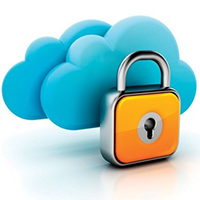 Businesses have become less skeptical of cloud computing, more confident in its security, and more inclined to invest money in it, according to new findings.
Businesses have become less skeptical of cloud computing, more confident in its security, and more inclined to invest money in it, according to new findings.
Nearly 70% of US businesses surveyed by B2B ratings and reviews firm Clutch say that they plan to increase spending on cloud computing in 2017.
One in five of those businesses report that their cloud computing spending this year will likely increase by more than 30%.
The increased spending on cloud computing is likely due to a shift in perspective, according to experts.
The cloud is no longer seen by many businesses as simply an alternative option, but as the next logical step for data storage and management.
“Cloud is the new normal,” said Jeremy Przygode, CEO of Stratalux, a California-based Managed Service Provider (MSP).
“When businesses need to evaluate new solutions, or need to do a hardware refresh on existing solutions.”
Cloud is the go-to solution to figure out how to do that… Read More
Edge Computing Market to Grow at 35% CAGR to 2023
Excerpted from Market Research Future Press Announcement
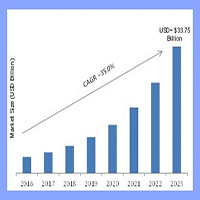 A new study reveals that the market for edge computing is trending in the North America region.
A new study reveals that the market for edge computing is trending in the North America region.
Advantages of edge computing include push applications, data transfer, and services to devices at the edge of networks that help reduce transmission costs, shrink latency, and improve user experience.
The recent trend of real-time reporting is boosting the edge computing market.
The study also signifies that the edge computing market is expected to grow at a high rate.
By moving computation from cloud to the edge, the response time is reduced from 900 to 169 milliseconds for such applications as facial recognition, which has a huge effect on improvement, operation optimization, unplanned downtime reduction, and high cost savings.
The edge computing market is growing rapidly with a compound annual growth rate (CAGR) of over 35.0% and is expected to reach $33.75 billion by the end of forecast period in 2023.
The edge computing market has been segmented on the basis of technology, component, deployment, application, end-user, and region… Read More
Cook and Bezos Converge on White House
Excerpted from CNET News Report by Ben Fox Rubin
 Leaders of the tech industry came to DC on Monday for a series of working sessions to discuss cybersecurity, updates to the government’s computer systems, and future tech trends.
Leaders of the tech industry came to DC on Monday for a series of working sessions to discuss cybersecurity, updates to the government’s computer systems, and future tech trends.
The meeting was hosted by the new White House Office of American Innovation, which is headed by President Donald Trump’s advisor and son-in-law Jared Kushner, and the American Technology Council.
Those in attendance included Apple CEO Tim Cook, Microsoft CEO Satya Nadella, Amazon CEO Jeff Bezos, Oracle Co-CEO Safra Catz, and IBM CEO Ginni Rometty, CBS News reported.
A handful of reporters also attended the all-day meeting, which kicked off a week of tech-themed administration events.
But the gathering wasn’t live-streamed.
Kushner opened the summit by talking up the government’s mammoth tech troubles.
He hit on federal agencies’ 6,100 costly data centers, many of which are decades old and could be “consolidated and migrated to the cloud” ans some Pentagon legacy systems still rely on floppy disks, he said… Read More
Report from DCIA CEO Marty Lafferty

As the DCIA completes its fourteenth year, we take this opportunity to thank our member companies, association sponsors, and DCINFO readers.
We are privileged to serve a group of organizations as dynamic and diverse as the distributed computing industry.
And we are proud of the many accomplishments of people involved at all levels.
Advancements in fog and edge computing, including use cases proving the benefits of tapping decentralized compute resources to compliment data centers, were – and continue to be – prominent in our agenda.
And we have continued our press for improved cybersecurity on many fronts, both publicly and privately, as a top priority.
Mobile cloud, big data, social networking, and internet of things (IoT) continued to progress, as did our work with consumer advocacy groups to support reasonable expectations of privacy for data stored in the cloud.
We were honored to serve as an affiliate association of the CTA with our CES exhibit booth and demos, to co-sponsor the Government Video Expo & National Drone Show presented by NewBay Media, and to partner on a global basis with additional firms in cutting edge conferences and expos designed to help propel cloud computing, cybersecurity, mobile cloud, and the IoT in their respective markets.
In the coming year, our focus will include a new area where we see the greatest potential for growth, the practical advancement of live video streaming, particularly with respect to user generated content (UGC).
Share wisely, and take care.
Verizon Partners with Cisco for Cloud-Based VNF
Excerpted from The Stack Report by Nicky Cappella
 Verizon has announced that it will now offer Virtualized Network Functions (VNF) through Cisco’s Virtual Managed Services.
Verizon has announced that it will now offer Virtualized Network Functions (VNF) through Cisco’s Virtual Managed Services.
The introduction of VNF services is expected to provide Verizon customers with faster business processes and more efficient use of technology resources.
Enterprises will have access to cloud-based versions of all services offered through the Verizon SD-WAN, with new options to be developed and offered soon.
Using Cisco’s VMS, Verizon will become the first global network to provide enterprise customers with a platform for Cisco’s intelligent WAN service, which offers centralized management, rapid provisioning, and zero-touch automation.
Combining the Verizon global network with Cisco’s VMS will allow for seamless delivery and a faster time to market for combined offerings from the two companies.
Additionally, the partnership will provide increased scalability and agility, with the faster provisioning of new services. Customers will also have better control of operational expenditures due to the automation of provisioning and a self-service user interface… Read More
Cisco Adapts to Rise of Cloud Computing
Excerpted from The Economist Report
 When John Chambers ran Cisco, the world’s biggest maker of networking gear, his hyperactivity nearly matched that of the high-speed switches and routers that made the firm’s fortune.
When John Chambers ran Cisco, the world’s biggest maker of networking gear, his hyperactivity nearly matched that of the high-speed switches and routers that made the firm’s fortune.
He pushed Cisco into dozens of new businesses, from set-top boxes to virtual health care.
He traveled the world preaching the virtues of connectivity.
In interviews it was hard to get a word in edgeways.
Conversations invariably ended on a restless question: “What should we do differently?”
Chuck Robbins, who succeeded Mr Chambers in July 2015, has two decades of experience selling Cisco gear and seems more comfortable talking about its core business than about diversifications.
He avoids the limelight and comes across as almost shy.
But he, too, is aware of the need to keep moving… Read More
Edge Computing Impacts Data Center Planning
Excerpted from Black & Veatch Holding Company Press Announcement
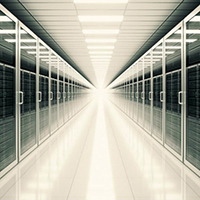
A new Black & Veatch white paper examines the emerging deployment of edge computing and its impacts on data center infrastructure planning.
Developed in partnership with DCD (formerly DatacenterDynamics), the white paper analyzes drivers, use cases and strategies to prepare for the edge computing evolution.
With edge computing, data is processed where it is first generated – closer to the edge of the network and away from the hyperscale computing, memory and storage core, or cloud.
The emergence of edge stems from advances in data processing, analytics and networks.
Coupled with the growth of the internet of things (IoT), big data, mobile technologies, and machine learning, these applications can enhance customer experience and present new avenues for revenue generation.
However, to realize these benefits, networks will need to be designed accordingly.
We have created such a considerable volume of data, and that led to the shift towards the cloud for batch and data processing… Read More
What Is Fog Computing?
Excerpted from The Merkle Report by JP Buntinx
 Fog computing has been a very popular industry over the past few years.
Fog computing has been a very popular industry over the past few years.
It is the next logical evolution of cloud computing, which has become somewhat of an inefficient solution for most projects.
Various cryptocurrency ICOs are focusing on fog computing as well these days.
However, the big question is what this concept entails exactly, and why people should care about it in the first place.
The world of technology is always evolving, and it appears some major breakthroughs are on the horizon.
Fog computing is one of those trends getting a lot of attention these days.
The concept of fog computing relies on building an architecture to use a multitude of end-user devices to carry out computational tasks.
This concept pertains to data storage, graphic design, supercomputing, and virtually any other process that involves the use of computing devices in general… Read More
Will Fog Computing Be IoT’s Computational Model?
Excerpted from Network World Report by Steven Max Patterson
 Fog computing and fog networking could fill the latency and range gap in the internet of things (IoT).
Fog computing and fog networking could fill the latency and range gap in the internet of things (IoT).
For the last couple of years, researchers have been reporting on developments in fog’s role in completing IoT’s ubiquitous connectivity.
It is similar to cloud computing architectures but it brings the cloud to the edge to meet the different demands of IoT.
The underlying concept is the cloud for some real-time IoT services could be too slow because the quality of service (QoS) specifications for the IoT application exceeds the cloud’s QoS.
The solution is to move the cloud out into the network.
Low latency and QoS is important in IoT use cases like self-driving vehicles and controlling robots and other control applications that require minimum latency to synchronize, supervise, control and initiate machine actions.
Range is important when connecting devices over long distances where hubs and gateways are not locally available.
The telcos have staked out this market and have begun a soft sell of M2M communications and 5G as the solution for IoT connectivity… Read More
Global Fog Computing Market 2016-2022
Excerpted from WhaTech Report by Sunny Denis
 A new report entitled Global Fog Computing Market provides insights that supplement the growth strategies of market players.
A new report entitled Global Fog Computing Market provides insights that supplement the growth strategies of market players.
In this report, market analysts provide growth estimates, forecasts, and an in-depth analysis of all key factors at play in the global fog computing market.
The report takes into account the micro and macro factors that are likely to impact the growth trajectory of the global fog computing market.
To begin with, the report defines the market and states the research methodologies used for arriving at forecasts.
It also offers a detailed overview of how the market has shaped up this far.
The report drills down to the second and third level of the global fog computing market by segmenting on various aspects such as products and applications, end-use industry, and geographical regions.
For the purpose of the study, market analysts have employed rigorous primary and secondary research techniques… Read More
Catching Up with an Interconnected Federal Cloud
Excerpted from GCN Report by Jody McCann
 Traditional IT infrastructures were built for a different time, and conflict with many of the core requirements of modern day computing that is exponentially increasing the world’s connectivity expectations and requirements.
Traditional IT infrastructures were built for a different time, and conflict with many of the core requirements of modern day computing that is exponentially increasing the world’s connectivity expectations and requirements.
Today’s government must find a path that leverages disruptive technologies, such as cloud computing, without disturbing agency personnel’s ability to deliver on their core missions.
As agencies try to escape the legacy systems built decades ago, benefits such as cost and energy savings are compelling them to move to cloud environments.
In 2011, the White House rolled out the “Federal Cloud Computing Strategy” was rolled out to address the fact that it can take years to build new data centers for new digital services, or months to increase capacity of existing data center services.
The “start-small” approach enabled by cloud computing lets agencies provision capacity incrementally so they can develop and test applications with smaller initial investments than traditional IT models allow.
At the same time, the nature of some expenses change from being capital investments in hardware and infrastructure… Read More
Most Government Websites Fail Security & Privacy Audit
Excerpted from BNA Blog by Jimmy Koo
 Consumer services sites such as Twitter and YouTube have the best website and email security and privacy practices, but approximately 60 percent of government websites are exposed to cybersecurity threats, according to a June 20 report by the Online Trust Alliance, an online industry non-profit.
Consumer services sites such as Twitter and YouTube have the best website and email security and privacy practices, but approximately 60 percent of government websites are exposed to cybersecurity threats, according to a June 20 report by the Online Trust Alliance, an online industry non-profit.
The alliance’s ninth annual “Online Trust Audit & Honor Roll” – for which the group analyzes more than 1,000 consumer-facing websites for privacy and security measures – found that 76 percent of audited consumer services websites had sufficient “grades” to make the honor roll.
The OTA defined consumer services websites as “any website that requires consumers to create an online account such as social media, file sharing or dating.”
Trailing the consumer services industry, 51 percent of internet retailers, 48 percent of news and media, 46 percent of internet service providers, 39 percent of US federal government websites, and 27 percent of Federal Deposit Insurance Corp. (FDIC) 100 banks made the OTA honor roll.
The OTA found that more websites are “trustworthy” than ever before, but the disparity between secure and unsecure websites is increasing… Read More
US Banks & Corps Establish Principles for Cyber Risk Firms
Excerpted from Reuters Report by Anna Irrera and Olivia Oran
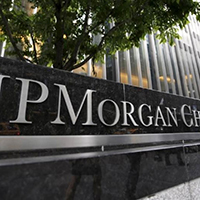 More than two dozen US companies, including several big banks, have teamed up to establish shared principles that would allow them to better understand their cyber security ratings and to challenge them if necessary, the US Chamber of Commerce said on Tuesday.
More than two dozen US companies, including several big banks, have teamed up to establish shared principles that would allow them to better understand their cyber security ratings and to challenge them if necessary, the US Chamber of Commerce said on Tuesday.
Large corporations often use the ratings, the cyber equivalent of a FICO credit score, to assess how prepared the companies they work with are to withstand cyberattacks.
Insurers also look at the ratings when they make underwriting decisions on cyber liability.
The group includes big banks like JPMorgan Chase, Goldman Sachs, and Morgan Stanley, as well as non-financial companies like coffee retailer Starbucks,, health insurer Aetna, and home improvement chain Home Depot.
They are organizing the effort through the Chamber of Commerce, a broad trade group for corporate America.
The move comes in response to the emergence of such startups as BitSight Technologies, RiskRecon, and SecurityScorecard that collect and analyze large swaths of data to rate companies on cybersecurity… Read More
FCC’s Pai Taps Rosemary Harold to Head Enforcement Bureau
Excerpted from Broadcasting & Cable Report by John Eggerton
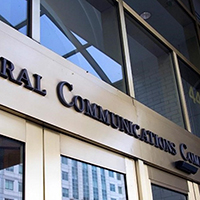 FCC Chairman Ajit Pai has tapped Rosemary Harold to head the FCC’s Enforcement Bureau as Chief.
FCC Chairman Ajit Pai has tapped Rosemary Harold to head the FCC’s Enforcement Bureau as Chief.
It will be a homecoming for Harold.
The bureau investigates and takes action against unlawful conduct.
She is former Legal Advisor to then-Commissioner Robert McDowell and has most recently been a Partner at Wilkinson Barker Knauer.
Michael Carowitz, who had been acting Bureau Chief, will be Deputy Bureau Chief.
Harold joined McDowell’s office in August 2008 as media legal advisor.
She had been the Deputy Chief of the FCC’s Media Bureau, and before that was with the communications firm of Wiley Rein & Fielding, which is headed by former FCC Chairman Richard Wiley and has supplied numerous legal minds to the FCC, including former Chairman Kevin Martin.
Her resume also includes journalist, both at the Miami Herald and as an editor with C-SPAN… Read More
Best Publicly Traded Cloud Computing Companies
Excerpted from Insider Monkey Report by Alexandr Oleinic
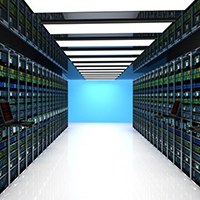 The technology sector never stops growing and the eleven best publicly traded cloud computing companies are at the forefront of that technological revolution, finding new ways to improve the ease of life and business.
The technology sector never stops growing and the eleven best publicly traded cloud computing companies are at the forefront of that technological revolution, finding new ways to improve the ease of life and business.
The cloud industry has been gaining ground in the last decade or so, becoming a major disruptor to other industries in the process.
However, because cloud computing is still young, most analysts and experts project that it will continue growing at a fast pace for at least the next three years.
IDC estimates that worldwide spending on public cloud computing will surge to $162 billion in 2020 from $82 billion in 2016, resulting in a CAGR of 19%.
Gartner meanwhile predicts that the worldwide cloud services market will grow to $246.8 billion this year from $209.2 billion in 2016 and will reach $383.36 billion in 2020.
When it comes to cloud computing, there are three main segments… Read More
Job Sites to Kick Start Your Cloud Computing Career
Excerpted from Cloud Academy Blog
 It’s a great time to be in the cloud computing industry.
It’s a great time to be in the cloud computing industry.
As established companies move toward cloud technologies, companies expand IT departments, and new companies form, IT professionals with cloud computing skills are in high demand.
Computerworld’s 2017 salary survey showed that, compared to all IT professionals, those working in cloud computing were commanding the highest compensation, at an average of $129,743.
In this post, we’ll look at some of the most common cloud positions that companies are hiring for and where to look for your next cloud computing job.
What are the typical roles in cloud computing?
If you’re looking to start a career in cloud computing, these are some of the most common roles that require cloud skills.
Engineer is your general purpose engineer for building features and fixing bugs in any type of application. There are entry, mid, and senior level cloud engineer positions open across the industry… Read More
Coming Events of Interest
Industry of Things World Asia — July 3rd and 4th in Singapore. An international knowledge exchange platform bringing together more than 300 high-level executives who play an active role in the industrial internet of things (IoT).
Industry of Things World Europe — September 18th and 19th in Berlin, Germany. Join more than 1,000 high-level executives to rethink your technology and business strategy for scalable, secure, and efficient IoT.
IoT Solutions World Congress — October 3rd through 5th in Barcelona, Spain. This event has grown enormously in no time and is an excellent barometer and source of information, inspiration, collaboration and transformation.
INTRASECT— November 1st and 2nd in Washington, DC. The first conference of its kind to engage key stakeholders in a comprehensive and engaging examination of existing and future regulatory policy governing the usage of commercial autonomous vehicles.
